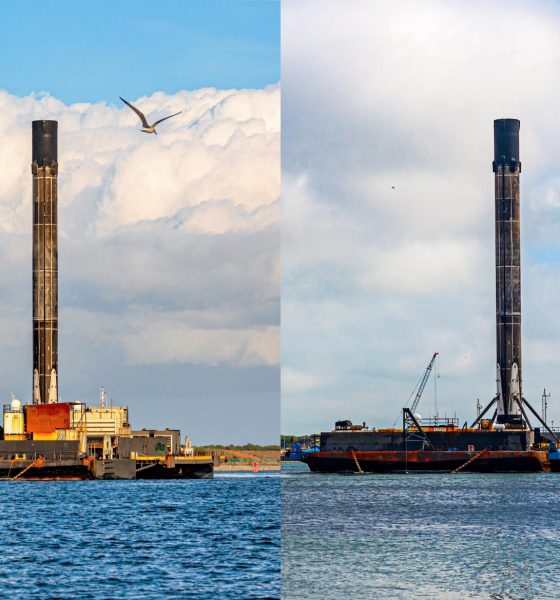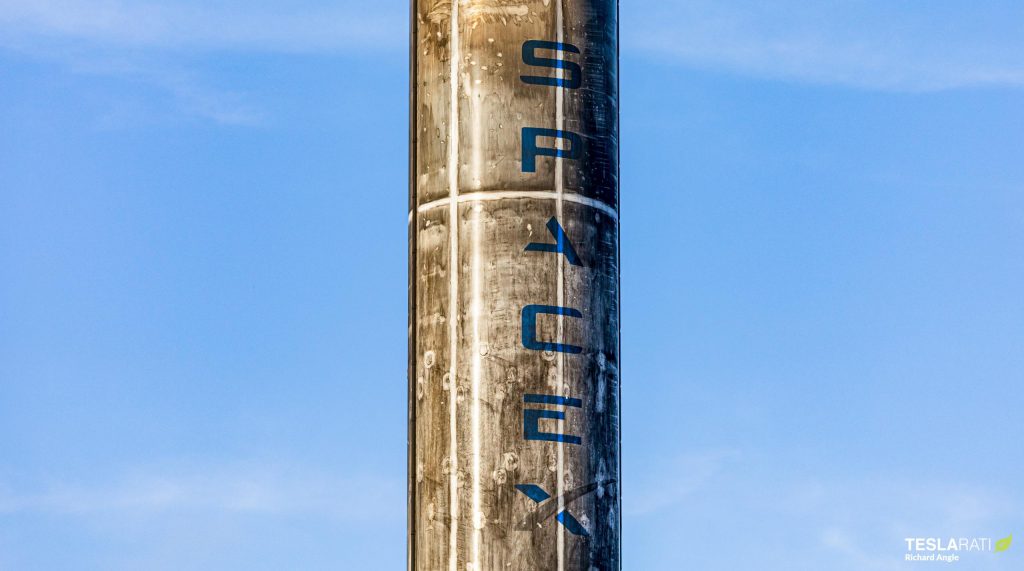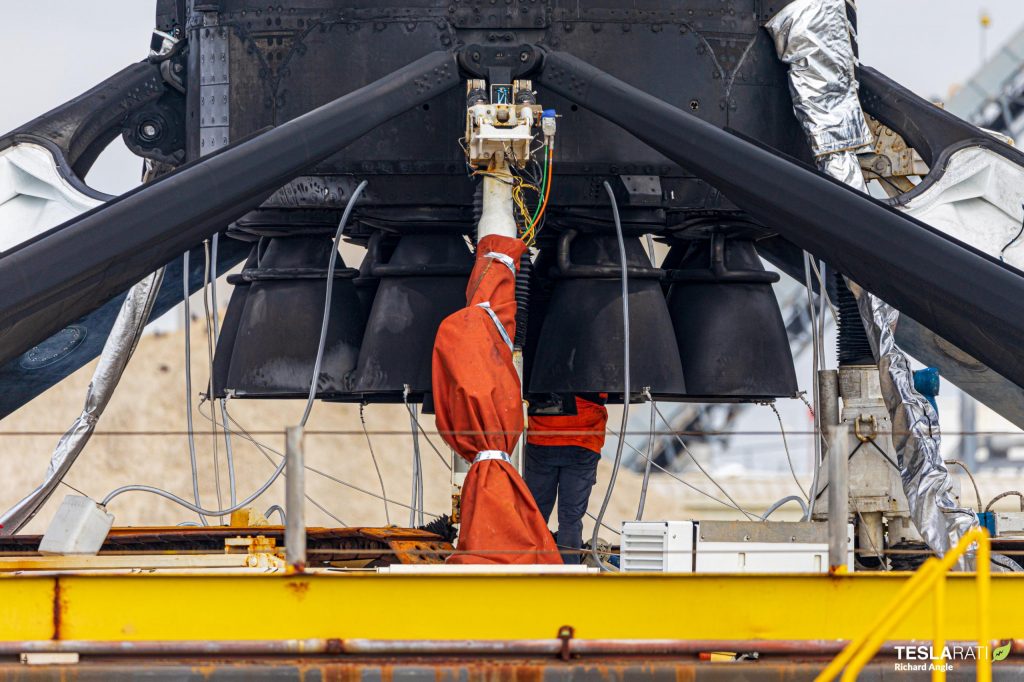

News
SpaceX drone ship fleet aces two Falcon 9 booster recoveries in 48 hours
SpaceX’s two-vessel drone ship fleet has successfully returned two boosters from sea to port in the space of just ~40 hours, an impressive feat that simultaneously shed light on a new kind of bottleneck for Falcon launches.
Completed on January 20th and 24th and originally planned as few as 25 hours apart, SpaceX’s back-to-back Starlink-16 and Transporter-1 launches made it clear that drone ship availability could quickly become a constraint as the company eyes increasingly ambitious launch cadence targets. CEO Elon Musk has stated that SpaceX is targeting up to 48 launches in 2021, translating to an average of one launch every 7.5 days.
As it turns out, measured from port departure to port arrival, that target is practically the same as the average amount of time it takes one of SpaceX’s two drone ship landing platforms to complete a booster recovery. Both existing drone ships must be slowly towed to and from the booster landing area, generally involving a minimum round trip of 800 miles (~1300 km) and some five days in transit.

In other words, even given a perfectly optimized schedule in which SpaceX launches missions requiring at-sea recovery every ~180 hours throughout 2021, each mission would have just a handful of days worth of margin before one launch delay would inherently delay another launch. Fundamentally, with a fleet of two drone ships requiring an average of five days of transit time per recovery, SpaceX could theoretically support as many as ~70 booster recoveries annually assuming zero downtime, no launch delays, and mere hours spent at the landing zone before turning around and heading back to port.
To be clear, recovery ship availability is an excellent problem to have, as it implies that SpaceX is fast approaching a rate of launch (and routine rocket landings) unprecedented in the history of commercial spaceflight. Thankfully, SpaceX also has an exceptional track-record of solving hard problems and there remains a great deal of ‘slack’ to be optimized out of its fleet of recovery ships.

That is all to say that removing the fundamental bottlenecks posed by SpaceX’s existing fleet will absolutely require at least one or two new drone ships on top of at least two major oil rig conversion projects in work for Starship. Whether in the form of one or more new converted barges or some kind of faster, self-propelled vessel, it’s safe to say that new ships are virtually guaranteed and likely close at hand unless SpaceX has decided to accept a semi-arbitrary ceiling on annual East Coast launches.
Just one month into 2021, SpaceX’s two drone ships are already being stretched to their operational limits to the point of launch delays. Delayed from January 17th to January 20th, Starlink-16 held up drone ship Just Read The Instruction for several days, resulting in the vessel returning to port on the 24th, just ~60 hours prior to Starlink-17’s original January 27th launch target. With drone ship Of Course I Still Love You (OCISLY) already indisposed at sea to support SpaceX’s January 24th Transporter-1 launch, SpaceX had to move Starlink-17 to January 30th.
After a few days in port for booster processing and maintenance, drone ship JRTI ultimately departed Port Canaveral for Starlink-17 on the evening of the 27th, most likely delaying the launch to Sunday, January 31st. For now, though, Falcon 9 booster B1049 is scheduled to launch for eighth time no earlier than (NET) 7:24 am EST (12:24 UTC), January 30th. Simultaneously, drone ship Of Course I Still Love You will likely need to depart Port Canaveral later this weekend to support Starlink-18, scheduled to launch as soon as 1:19 am EST, February 4th.

Elon Musk
Elon Musk and Tesla AI Director share insights after empty driver seat Robotaxi rides
The executives’ unoccupied tests hint at the rapid progress of Tesla’s unsupervised Robotaxi efforts.

Tesla CEO Elon Musk and AI Director Ashok Elluswamy celebrated Christmas Eve by sharing personal experiences with Robotaxi vehicles that had no safety monitor or occupant in the driver’s seat. Musk described the system’s “perfect driving” around Austin, while Elluswamy posted video from the back seat, calling it “an amazing experience.”
The executives’ unoccupied tests hint at the rapid progress of Tesla’s unsupervised Robotaxi efforts.
Elon and Ashok’s firsthand Robotaxi insights
Prior to Musk and the Tesla AI Director’s posts, sightings of unmanned Teslas navigating public roads were widely shared on social media. One such vehicle was spotted in Austin, Texas, which Elon Musk acknowleged by stating that “Testing is underway with no occupants in the car.”
Based on his Christmas Eve post, Musk seemed to have tested an unmanned Tesla himself. “A Tesla with no safety monitor in the car and me sitting in the passenger seat took me all around Austin on Sunday with perfect driving,” Musk wrote in his post.
Elluswamy responded with a 2-minute video showing himself in the rear of an unmanned Tesla. The video featured the vehicle’s empty front seats, as well as its smooth handling through real-world traffic. He captioned his video with the words, “It’s an amazing experience!”
Towards Unsupervised operations
During an xAI Hackathon earlier this month, Elon Musk mentioned that Tesla owed be removing Safety Monitors from its Robotaxis in Austin in just three weeks. “Unsupervised is pretty much solved at this point. So there will be Tesla Robotaxis operating in Austin with no one in them. Not even anyone in the passenger seat in about three weeks,” he said. Musk echoed similar estimates at the 2025 Annual Shareholder Meeting and the Q3 2025 earnings call.
Considering the insights that were posted Musk and Elluswamy, it does appear that Tesla is working hard towards operating its Robotaxis with no safety monitors. This is quite impressive considering that the service was launched just earlier this year.
Elon Musk
Starlink passes 9 million active customers just weeks after hitting 8 million
The milestone highlights the accelerating growth of Starlink, which has now been adding over 20,000 new users per day.

SpaceX’s Starlink satellite internet service has continued its rapid global expansion, surpassing 9 million active customers just weeks after crossing the 8 million mark.
The milestone highlights the accelerating growth of Starlink, which has now been adding over 20,000 new users per day.
9 million customers
In a post on X, SpaceX stated that Starlink now serves over 9 million active users across 155 countries, territories, and markets. The company reached 8 million customers in early November, meaning it added roughly 1 million subscribers in under seven weeks, or about 21,275 new users on average per day.
“Starlink is connecting more than 9M active customers with high-speed internet across 155 countries, territories, and many other markets,” Starlink wrote in a post on its official X account. SpaceX President Gwynne Shotwell also celebrated the milestone on X. “A huge thank you to all of our customers and congrats to the Starlink team for such an incredible product,” she wrote.
That growth rate reflects both rising demand for broadband in underserved regions and Starlink’s expanding satellite constellation, which now includes more than 9,000 low-Earth-orbit satellites designed to deliver high-speed, low-latency internet worldwide.
Starlink’s momentum
Starlink’s momentum has been building up. SpaceX reported 4.6 million Starlink customers in December 2024, followed by 7 million by August 2025, and 8 million customers in November. Independent data also suggests Starlink usage is rising sharply, with Cloudflare reporting that global web traffic from Starlink users more than doubled in 2025, as noted in an Insider report.
Starlink’s momentum is increasingly tied to SpaceX’s broader financial outlook. Elon Musk has said the satellite network is “by far” the company’s largest revenue driver, and reports suggest SpaceX may be positioning itself for an initial public offering as soon as next year, with valuations estimated as high as $1.5 trillion. Musk has also suggested in the past that Starlink could have its own IPO in the future.
News
NVIDIA Director of Robotics: Tesla FSD v14 is the first AI to pass the “Physical Turing Test”
After testing FSD v14, Fan stated that his experience with FSD felt magical at first, but it soon started to feel like a routine.

NVIDIA Director of Robotics Jim Fan has praised Tesla’s Full Self-Driving (Supervised) v14 as the first AI to pass what he described as a “Physical Turing Test.”
After testing FSD v14, Fan stated that his experience with FSD felt magical at first, but it soon started to feel like a routine. And just like smartphones today, removing it now would “actively hurt.”
Jim Fan’s hands-on FSD v14 impressions
Fan, a leading researcher in embodied AI who is currently solving Physical AI at NVIDIA and spearheading the company’s Project GR00T initiative, noted that he actually was late to the Tesla game. He was, however, one of the first to try out FSD v14.
“I was very late to own a Tesla but among the earliest to try out FSD v14. It’s perhaps the first time I experience an AI that passes the Physical Turing Test: after a long day at work, you press a button, lay back, and couldn’t tell if a neural net or a human drove you home,” Fan wrote in a post on X.
Fan added: “Despite knowing exactly how robot learning works, I still find it magical watching the steering wheel turn by itself. First it feels surreal, next it becomes routine. Then, like the smartphone, taking it away actively hurts. This is how humanity gets rewired and glued to god-like technologies.”
The Physical Turing Test
The original Turing Test was conceived by Alan Turing in 1950, and it was aimed at determining if a machine could exhibit behavior that is equivalent to or indistinguishable from a human. By focusing on text-based conversations, the original Turing Test set a high bar for natural language processing and machine learning.
This test has been passed by today’s large language models. However, the capability to converse in a humanlike manner is a completely different challenge from performing real-world problem-solving or physical interactions. Thus, Fan introduced the Physical Turing Test, which challenges AI systems to demonstrate intelligence through physical actions.
Based on Fan’s comments, Tesla has demonstrated these intelligent physical actions with FSD v14. Elon Musk agreed with the NVIDIA executive, stating in a post on X that with FSD v14, “you can sense the sentience maturing.” Musk also praised Tesla AI, calling it the best “real-world AI” today.








